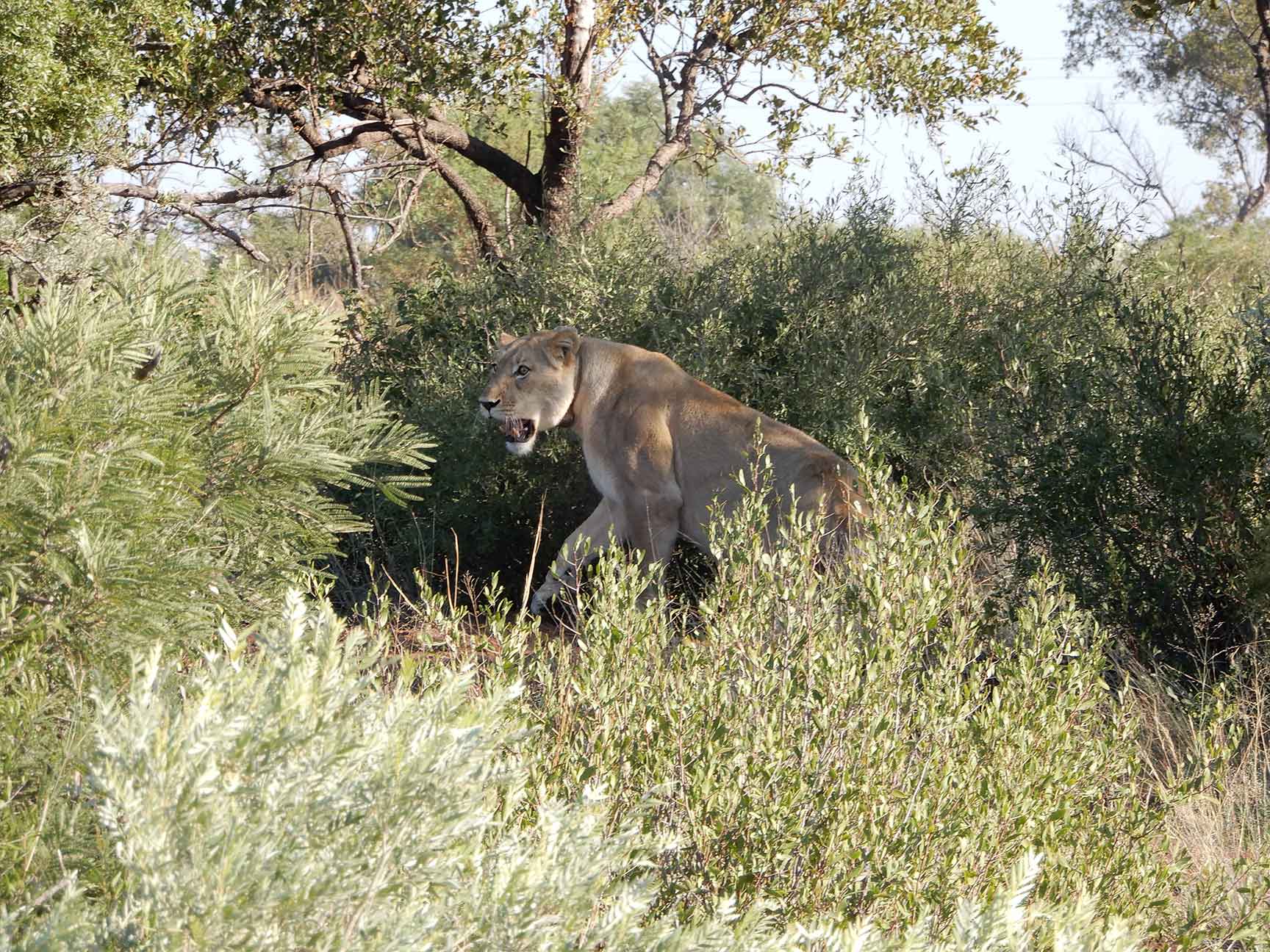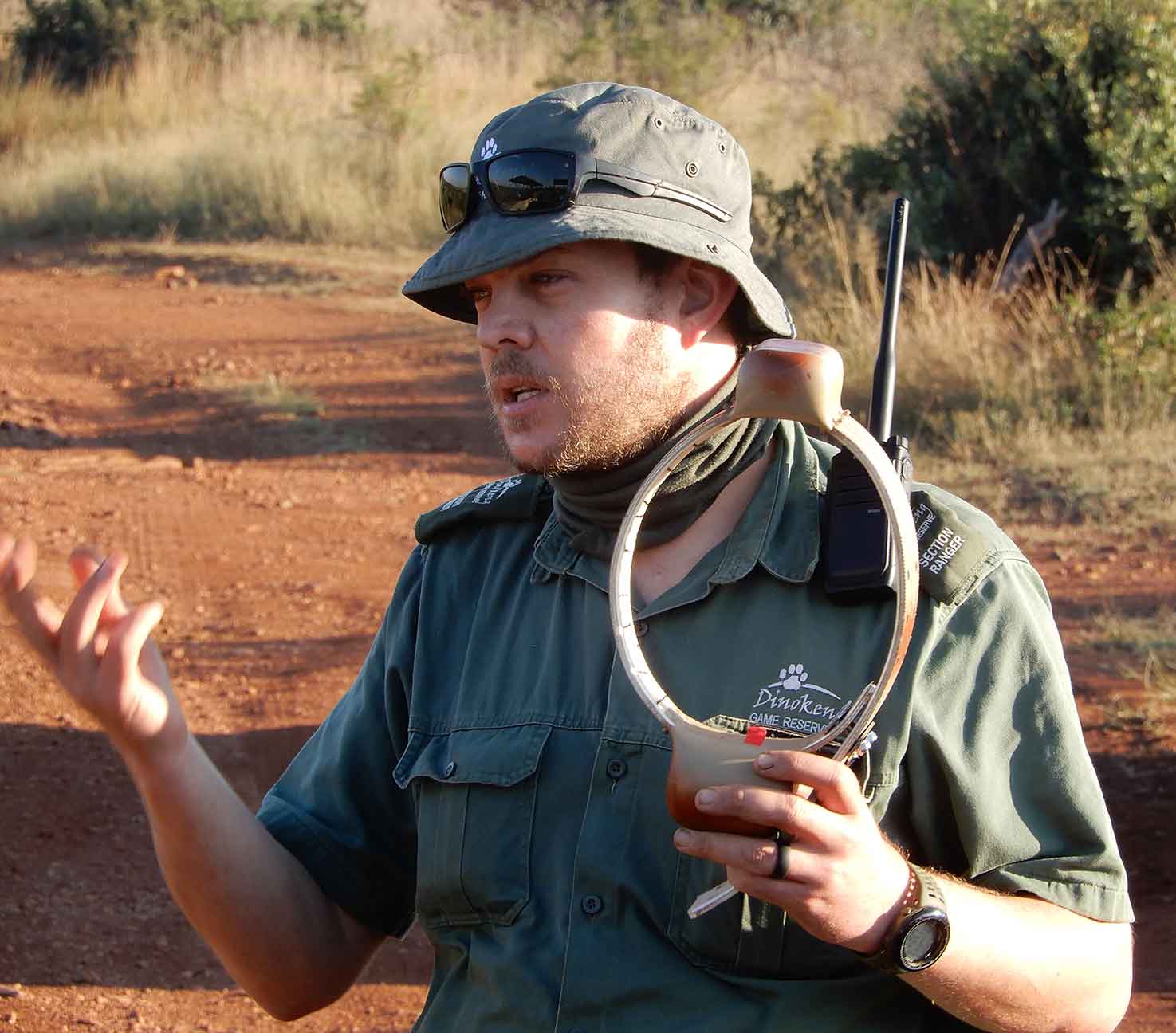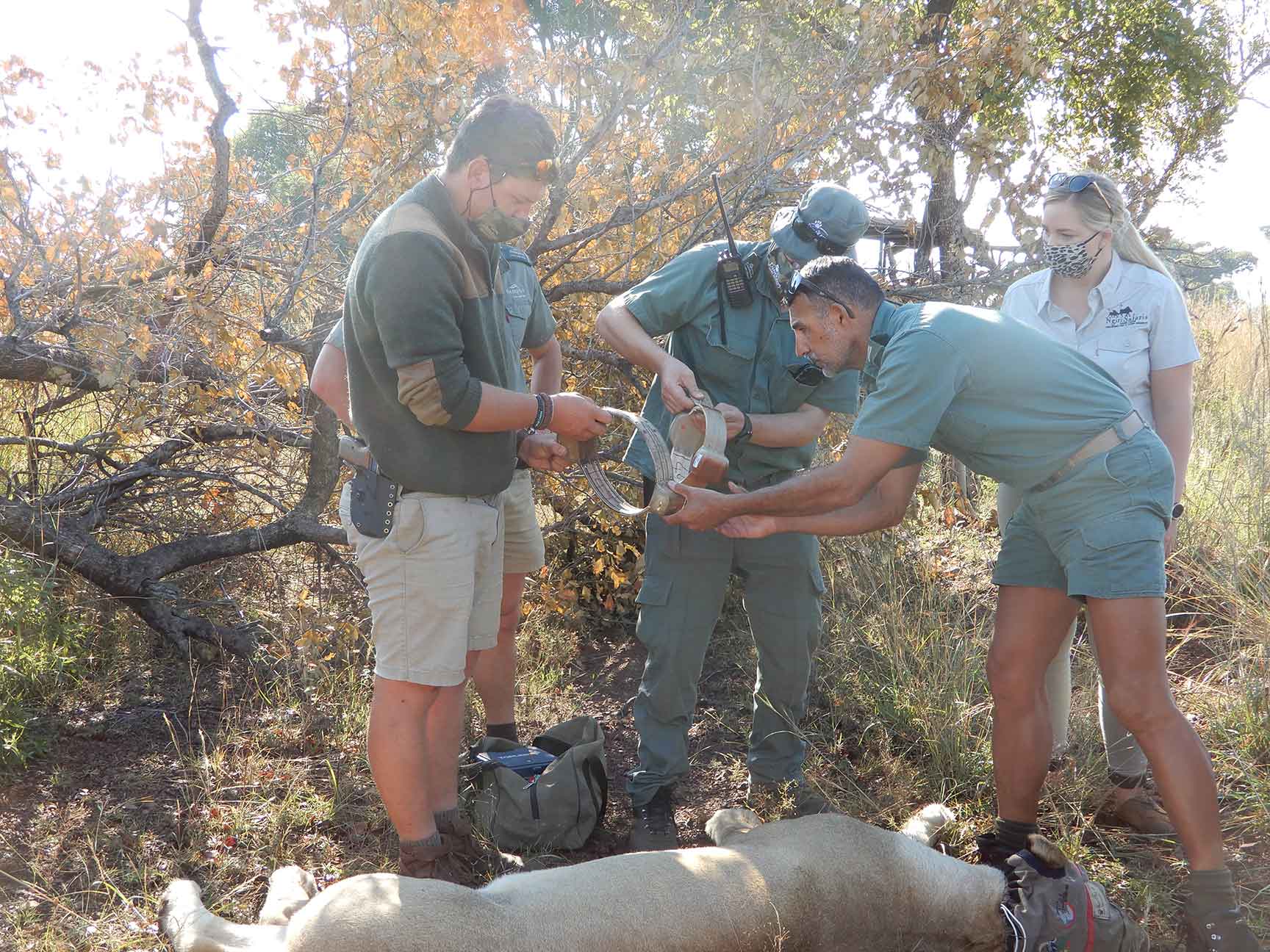Collaring – The how’s and why’s
Collaring lions is most definitely a crucial part to the conservation of lions – but not many of us are aware of the vital role it plays. Foundation Director Caroline went along on a lion collaring trip, and this is a piece she wrote on the experience.

There are various reasons for this, such as knowing the whereabouts of an animal to be sure it hasn’t escaped or is approaching human settlements, or generally being able to make note of its movements. If for example, a signal from a collar has not moved for some days, the animal might be injured or even snared. The rangers can then pick up on the lack of movement and check on the animal. Collars and batteries will last about three years and cost about $3000 – a large expense in South Africa.
I was lucky enough to go with the Dinokeng rangers and vet to replace a collar and do implants on two lionesses from the South Eastern pride. Once the animals have been located, they have to be darted. Sometimes rangers in vehicles manage to locate them but other times a helicopter has to be called in to help if the bush is particularly dense. The helicopter is also able to monitor other pride members and keep them away. These two girls, 13 and 10 years old, were near a road. One lioness, in particular, was very strong and gave the helicopter the run around even after being darted. Once asleep, they were carried to an open spot and work began. The new collar was VHF and satellite; the satellite part was housed in the smaller box on the top of the collar and the VHF and batteries were housed in the heavier, larger, lower box.



